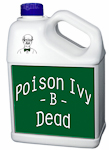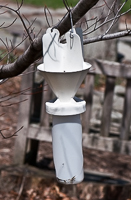 Since about
World War II, the answer to the pest control
question was simply, "Spray!" Fortunately,
this is no longer the case. While spraying
something is still an option, it should
always be the last option considered for a
home landscape problem.
Since about
World War II, the answer to the pest control
question was simply, "Spray!" Fortunately,
this is no longer the case. While spraying
something is still an option, it should
always be the last option considered for a
home landscape problem.
Fortunately,
(at least I think so), we now have a much
wider array of options available to address
our landscape problems and concerns.
Research at major universities throughout
the world has opened the door to
understanding our "pests" better which has
helped us to discover new approaches to
their control.
We now know
that not everything needs to be controlled.
We know that controlling some pests in
certain ways may actually lead to a bigger
problem by eliminating beneficial insects
too. We have learned that nature has ways to
keep most critters in reasonable control if
left to its own devices.
 Listed below
are a number of categories of control
alternatives commonly used as part of an
Integrated Pest Management approach. As part
of this step, you might want to go through
these alternatives in the following order
remembering that the last one, Chemical
Control i.e. Pesticides is always a viable
option. The key is that it should only be
used if the problem cannot be adequately
managed using one of the other alternatives.
Listed below
are a number of categories of control
alternatives commonly used as part of an
Integrated Pest Management approach. As part
of this step, you might want to go through
these alternatives in the following order
remembering that the last one, Chemical
Control i.e. Pesticides is always a viable
option. The key is that it should only be
used if the problem cannot be adequately
managed using one of the other alternatives.
-
Do Nothing
- Perhaps you can just leave things
alone.
-
Cultural Control
- Better water, fertilizer or
some other cultural practice may be all
you need.
-
Mechanical Control
- Hand picking bugs or
hoeing weeds might do the job.
-
Biological Control
- Let Nature do its thing with
natural enemies of our pests.
-
Chemical Control
- This last option may include
either synthetic or "organic"
pesticides.
After
implementing a control option (or not), you
need to determine if it met your needs by
Evaluating the Results



